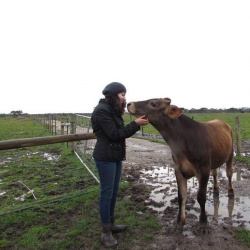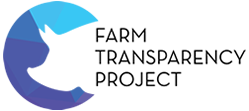News & Media > Editorials > COVID-19: what it is, what it was, and what it could be
COVID-19: what it is, what it was, and what it could be
The now – a doctor in a pandemic
“Be sensible. Be calm. Be kind. Be safe.”
Amidst the tide of policy and workplace changes I am currently experiencing, this is the message currently being delivered to myself and my colleagues as emergency doctors in a tertiary hospital in Australia. In a pandemic, where updates about testing criteria, definition of disease and wearing Personal Protective Equipment (PPE), change multiple times a day, it is this message that is constant.
It is a strange time to be a healthcare worker right now. Though externally we still show up for work every day and do the daily tasks required of us, there is now a new undercurrent of fear. Most of us are not afraid for our own health. We are afraid for our existing patients, who are already experiencing huge wait times for certain aspects of public healthcare such as elective surgery and outpatient clinic appointments (both of which will likely be temporarily postponed). We are afraid for our families, who may get sick because it is our job to be on the frontline. We are afraid our already busy jobs will become even more hectic, though of course we recognise we are privileged to even still have a job at all. Most of all though, we are afraid our healthcare system will not cope, and there will not be enough resources to help those who need us, even if we are eager and available.
I write this article on a day off, and it feels like the calm before the storm. In a few weeks I may not have time to research the origins of COVID-19, but as I look to the months ahead, it seems appropriate to learn what I can about this virus that has single-handedly changed the lives of every person around the world.
The then – zoonotic diseases in history
“For every virus that we know about, there are hundreds that we don’t know anything about. There are a lot more pathogens out there.” – Professor Daniel Bausch, infectious disease physician and virologist, UK Public Health Rapid Support Team & London School of Hygiene & Tropical Medicine.
Though we may not know the specifics of the potential pathogens that could cause a human health crisis, we have known for many years the possibility of such an event occurring.
While I wish I could state that the current COVID-19 pandemic has taken humanity by complete surprise, the reality is, though unprecedented in its effects, we have had prior warning that novel and emerging viruses can wreak havoc on our health.
The World Health Organisation (WHO) and the Centres for Disease Control and Prevention (CDC) states, in the last decade, 75% of new infectious diseases were zoonotic in nature. This means that they were originally only found in animals, but, through a variety of mechanisms, have been transmitted to humans. It is this transmission to humans that then creates the novel diseases that have the potential to spread around the world through human-human contact, as has been exactly the case for COVID-19.
The table below documents a selection of well-known novel zoonotic pathogens that have created human disease in our recent history.
|
Novel pathogen/human disease |
Animal host |
Intermediate animal transmission method/mechanism |
Animal-human transmission method |
|
HIV/AIDS |
Chimpanzees |
Nil |
Direct to humans through the practice of bushmeat hunting |
|
Bovine spongiform encephalopathy (BSE – disease in cows)/Variant Creutzfeldt–Jakob disease (vCJD – disease in humans)/Mad Cow disease |
Cattle
|
Farmed cattle being fed meat-and-bone meal containing infected cattle remains |
Humans consuming cow meat infected with BSE. |
|
Nipah virus |
Fruit bats |
Habitat loss -> wildlife migrating to fruit farms next to intensive pig farms Initial transmission from bats -> pigs due to close proximity |
Pigs -> humans through close contact during farming |
|
Ebola virus |
Fruit bats |
Transmission to other animals (primates, antelopes, shrews) through the digestion of bat faeces |
Bats/intermediate animal -> humans through bushmeat hunting/preparing food |
|
Avian flu (Influenza A viruses) |
Aquatic birds |
Poultry |
Direct contact with contaminated animals, usually during animal husbandry or live bird markets (Note low human-human transmission rate) |
|
Swine flu (Influenza A viruses) |
Pigs (possibly through transformation of the virus from aquatic birds) |
- |
Direct contact with contaminated animals, usually during animal husbandry (Note low human-human transmission rate) |
|
SARS‐CoV virus (SARS) |
Bats |
Civet cats (likely through the digestion of bat faeces) |
Likely due to close contact at wildlife or “wet” markets, where live or dead animals are sold for human consumption |
|
MERS-CoV virus (MERS) |
Bats |
Camels (likely through the digestion of bat faeces) |
Close contact to camels, especially at slaughterhouses |
|
SARS-CoV-2 (COVID-19) |
Bats |
Still unclear – perhaps pangolins (likely through the digestion of bat faeces) |
Likely due to close contact at wildlife or “wet” markets, where live or dead animals are sold for human consumption |
It is important to note zoonotic diseases are not always transmitted by close contact to animals. For example, foodborne illnesses, such as various types of gastroenteritis, can be associated with consuming animal products, however they can also be transmitted through faecal contamination of water by wild animals with the pathogens. Another example is vector-borne diseases such as malaria and Zika virus, which are both transmitted by mosquitos. This makes the discussion of preventing zoonotic diseases a complex issue, as a solution for one illness may not be a solution for another.
The future – a One Health approach
“One Health is an approach that recognizes that the health of people is closely connected to the health of animals and our shared environment.” – The Centers for Disease Control and Prevention (CDC).
The idea of One Health as an approach to improving health outcomes is one that leaders in world health, including the WHO and the CDC, have begun adopting over the past 5 or so years. It recognises that humans live in a complex world, and many of our behaviours not only impact the animals and environment around us, but in turn have the ability to impact human health also.
Climate change is an example of one such issue, and so too, are zoonotic diseases.
In the case of COVID-19, close contact with animals, both through humans encroaching on wild animal territory and animal husbandry practices, most likely led to the transmission of the virus to humans. Due to the high level of travel and trade that exists in our world, we also saw the rapid transmission of the novel disease, which has greatly contributed to the impact it is having around the world.
However what COVID-19 has also shown us is what the world can do when needed to. All over the world people are self-isolating to help limit the spread of the disease to people they may never meet, and to keep hospitals they may never attend from being overwhelmed. All over the world healthcare students and retired professionals are mobilising to help the healthcare system during this time, at risk to their own health. All over the world, people, corporations and governments, are united in a common goal to limit the impact of this emerging disease.
We have shown that we already have the ability to tackle a human issue with kindness and respect and consideration. It is not so hard to extend this notion to include the greater non-human world around us, and may end up having vast benefits for humans in the process.
Conclusion
I could finish this article by telling you that zoonotic diseases are a major threat to our species.
I could tell you that decreasing our encroachment on wild animals, and decreasing animal husbandry practices of agricultural animals will likely decrease this risk.
I could tell you that had we had some foresight, COVID-19 may never have occurred.
Indeed, all of these statements are probably true.
However, I am not a public health expert and I do not know when the right time for this conversation is. What I know is that while cases are continuing to rise, and while the state of the healthcare system over the next few months is still uncertain, my responsibility is to my patients and my community, and to minimising suffering during the acute phase of this pandemic. What I hope is that when the relevant experts deem it an appropriate time to discuss the complex issue of preventing pandemics, whether it be now or in 3 or 6 or 12 months, we are able to have a sensible and collaborative discussion about what we can learn from COVID-19, and the opportunity we could have to shape the direction of the world. At the least, I hope as individuals we start to consider the impact of our choices and behaviours within the concept of One Health, and any potential role we could have in mitigating the risks of future catastrophic global events.
So instead, I will finish this article by wishing patients, families and healthcare workers directly affected by COVID-19, as well as those many more people who are self-isolating, all the very best.
Be sensible. Be calm. Be kind. Be safe.
References
https://www.ncbi.nlm.nih.gov/pubmed/32226286
https://www.ncbi.nlm.nih.gov/books/NBK554776/
https://www.ncbi.nlm.nih.gov/pmc/articles/PMC7068984/
https://www.mdpi.com/2076-0817/9/3/186/htm
https://www.sciencedirect.com/science/article/pii/S0924857920300674?via%3Dihub
https://onlinelibrary.wiley.com/doi/full/10.1002/jmv.25709
https://www.cdc.gov/onehealth/resource-library/index.html
https://www.ncbi.nlm.nih.gov/books/NBK215318/
http://www.emro.who.int/fr/about-who/rc61/zoonotic-diseases.html
http://sphweb.bumc.bu.edu/otlt/MPH-Modules/PH/PH709_Transmission/PH709_Transmission6.html
https://absa.org/wp-content/uploads/2017/01/ZoonoticFactSheet.pdf
https://www.surgeactivism.org/covid19
https://www.biorxiv.org/content/10.1101/2020.01.22.914952v1.full
https://www.who.int/features/qa/one-health/en/
https://www.cdc.gov/onehealth/basics/index.html
https://www.oie.int/en/for-the-media/onehealth/



